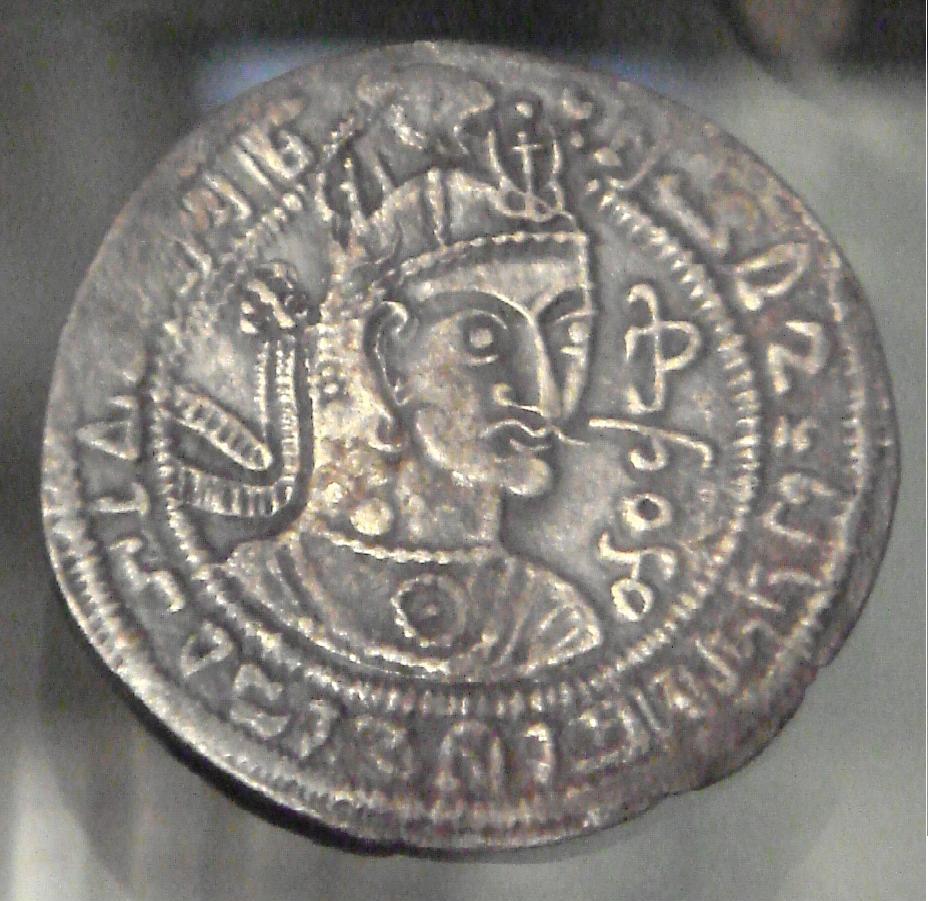Tegin on:
[Wikipedia]
[Google]
[Amazon]
 Tegin (, also tigin, MC *''dək-gɨn'' >
Tegin (, also tigin, MC *''dək-gɨn'' >
 Tegin (, also tigin, MC *''dək-gɨn'' >
Tegin (, also tigin, MC *''dək-gɨn'' > Pinyin
Hanyu Pinyin, or simply pinyin, officially the Chinese Phonetic Alphabet, is the most common romanization system for Standard Chinese. ''Hanyu'' () literally means 'Han Chinese, Han language'—that is, the Chinese language—while ''pinyin' ...
: ''Tèqín''; , erroneously ''Tèlè'' ) is a Turkic title, commonly attachable to the names of the junior members of the Khagan
Khagan or Qaghan (Middle Mongol:; or ''Khagan''; ) or zh, c=大汗, p=Dàhán; ''Khāqān'', alternatively spelled Kağan, Kagan, Khaghan, Kaghan, Khakan, Khakhan, Khaqan, Xagahn, Qaghan, Chagan, Қан, or Kha'an is a title of empire, im ...
's family. However, Ligeti cast doubts on the Turkic provenance by pointing to the non-Turkic plural form ''tegit.'' According to Mahmud al-Kashgari, tegin means 'servant, slave' ().
History
History records many people carrying the title Tegin. The best known is Kül Tigin (, erroneously ), noted for the stele in his memory in the Orkhon inscriptions. Some Tegins founded and headed their own states. Alp-Tegin, founder of theGhazni
Ghazni (, ), historically known as Ghaznayn () or Ghazna (), also transliterated as Ghuznee, and anciently known as Alexandria in Opiana (), is a city in southeastern Afghanistan with a population of around 190,000 people. The city is strategica ...
state, which grew into the Ghaznavid Empire
The Ghaznavid dynasty ( ''Ġaznaviyān'') was a Persianate Muslim dynasty of Turkic peoples, Turkic ''mamluk'' origin. It ruled the Ghaznavid Empire or the Empire of Ghazni from 977 to 1186, which at its greatest extent, extended from the Oxus ...
; Arslan Tegin and Bughra Tegin, both instrumental in the creation of the Kara-Khanid Kaganate. The Chinese '' History of the Northern Dynasties'' states that the Hephthalite
The Hephthalites (), sometimes called the White Huns (also known as the White Hunas, in Iranian as the ''Spet Xyon'' and in Sanskrit and Prakrit as the ''Sveta-huna''), were a people who lived in Central Asia during the 5th to 8th centuries CE, ...
emperor of the Gandhara
Gandhara () was an ancient Indo-Aryan people, Indo-Aryan civilization in present-day northwest Pakistan and northeast Afghanistan. The core of the region of Gandhara was the Peshawar valley, Peshawar (Pushkalawati) and Swat valleys extending ...
state was from a ruling clan of the neighboring Tegin state.Zuev Yu. A. ''"The strongest tribe Esgil"'' //Materials of International Round Table, Almaty, 2004, p.44, With time, the title ''tegin'' became a popular personal name and now perseveres both as personal and family name, predominantly in the South Asia and Middle East areas. The Hungarian name Tétény, in old Hungarian Tühütüm likely descends from the title Tegin.
Notable tegins
* Alp Tigin * Anushtakin al-Dizbari * Anushtegin Gharchai * Kul Tigin * Sabuktigin *Böritigin
Böritigin, also known as Ibrahim ibn Nasr or Tamghach Khan Ibrahim, was a Kara-Khanid dynasty, Karakhanid ruler in Transoxiana from 1038 to 1068. He was one of the greatest rulers of the dynasty.
Biography
He was the son of Nasr Khan, a Karakh ...
* Bilgetegin
* Gazi Gümüshtigin
* Al-Taj Gümüshtegin
* Tegin Shah
* Toghtekin
* Amin Khan Aitigin
References
{{Reflist History of the Turkic peoples Turkic culture Turkish words and phrases Titles of the Göktürks